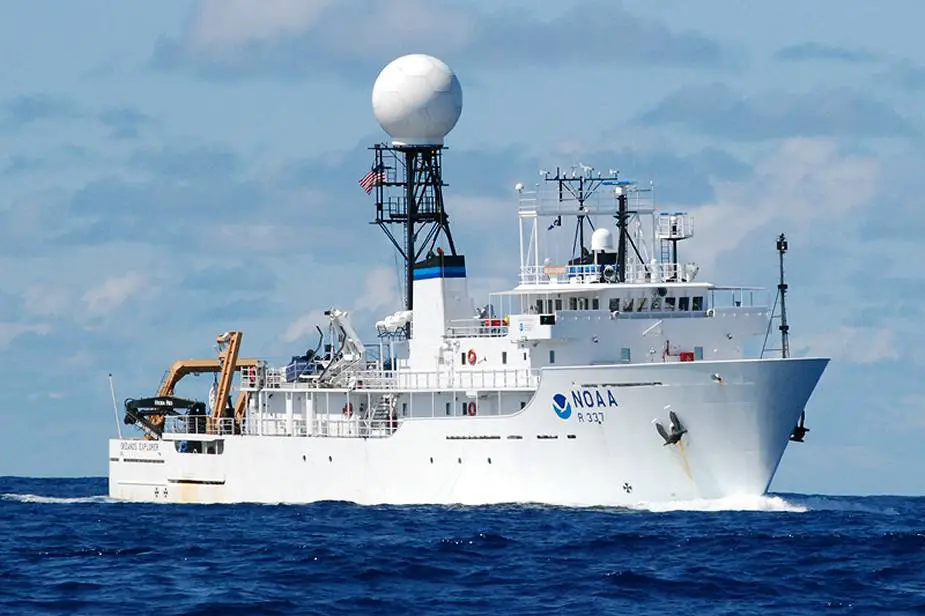According to a contract published by the United States Department of Defense on December 31, 2020, Thoma-Sea Marine Constructors LLC,* Houma, Louisiana, is awarded a $178,082,877 firm-fixed-price modification to a previously-awarded contract to exercise options for the detail design and construction of the National Oceanic and Atmospheric Administration (NOAA) Auxiliary General Oceanographic Research Variant (NAV) Ship 1 and Ship 2.
Follow Navy Recognition on Google News at this link
 Okeanos Explorer (R 337) exploratory vessel of the U.S. National Oceanic and Atmospheric Administration. (Picture source NOAA)
Okeanos Explorer (R 337) exploratory vessel of the U.S. National Oceanic and Atmospheric Administration. (Picture source NOAA)
This award completes Phase II of the NAV two-phase, down-select competition. This option exercise is for the detail design and construction for the NAV Ships 1 and 2. Thoma-Sea Marine Constructors LLC will be the shipyard responsible for the ship construction of the two NAV vessels (lead ship and additional ship).
According to information published by the Naval Sea Systems Command (NAVSEA), the U.S. Navy and NOAA (National Oceanic and Atmospheric Administration) have agreed to acquire two NOAA AGOR (Auxiliary General Oceanographic Research) Vessels as part of NOAA’s fleet rebuilding plan. Once in service, the new ships will support a wide variety of missions, ranging from general oceanographic research and exploration to marine life, climate and ocean ecosystem studies.
The two new ships will greatly enhance NOAA’s ocean exploration and scientific research capabilities. The first ship, to be named OCEANOGRAPHER, will be homeported in Honolulu, Hawaii. The second ship, to be named DISCOVERER, will be assigned a homeport
Designed as single-hull ships, the OCEANOGRAPHER and DISCOVERER will be under 90 meters in length and will be built to commercial standards. They will incorporate the latest technologies including high-efficiency environmentally friendly EPA Tier IV diesel engines, emissions controls for stack gases, new information technology tools for monitoring shipboard systems, and state-of-the-art scientific underwater research and survey equipment. Each vessel will operate with a crew of 20 and will have accommodations for up to 28 scientists.
Currently, the fleet of the U.S. National Oceanic and Atmospheric Administration includes 8 ships that entered into service from 1970 - 2008. NOAAS Okeanos Explorer (R 337) that was launched in 2010, is a converted United States Navy ship (formerly USNS Capable (T-AGOS-16)), now an exploratory vessel for the National Oceanic and Atmospheric Administration (NOAA).



